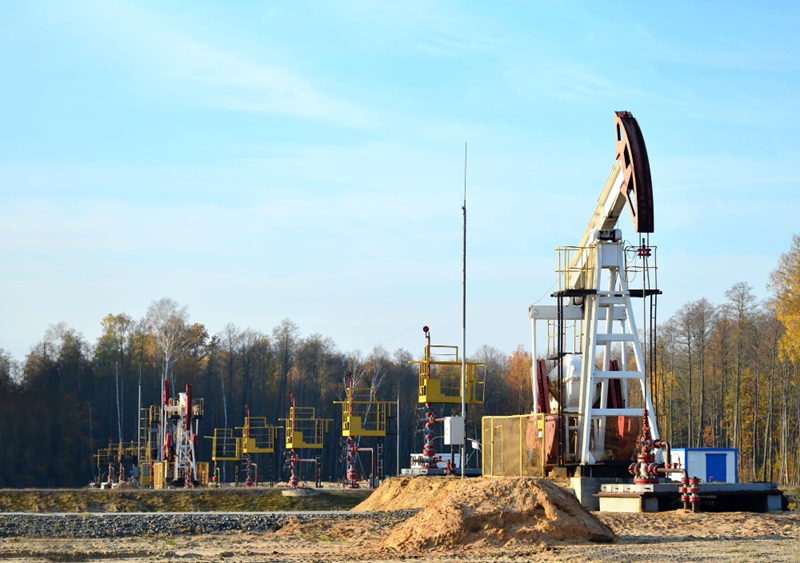 Ever dreamt of having your own personal water source, independent of unpredictable rainfall or municipal schedules? Borewell drilling can turn that dream into reality. This method creates a narrow shaft, tapping into deep underground water reserves. Imagine turning on your faucet and knowing exactly where that refreshing water comes from – your very own dependable well. Let’s explore the fascinating world of borewells and how they bring water security to homes and industries with the help of boring pipe suppliers.
Ever dreamt of having your own personal water source, independent of unpredictable rainfall or municipal schedules? Borewell drilling can turn that dream into reality. This method creates a narrow shaft, tapping into deep underground water reserves. Imagine turning on your faucet and knowing exactly where that refreshing water comes from – your very own dependable well. Let’s explore the fascinating world of borewells and how they bring water security to homes and industries with the help of boring pipe suppliers.
Choosing Between Borewells and Open Wells
When deciding between a borewell and an open well, consider various factors such as geographical location, property layout, intended usage, and cost. Here’s a detailed look at the differences between open wells and borewells to help you choose the appropriate option:
- Open wells generally provide a lower water yield compared to borewells.
- The contamination levels in open wells are high, making the water unsuitable for direct use in drinking or cooking.
- Open wells pose a significant risk, including the possibility of children falling into them.
- Extracting water from an open well is a manual process that involves a rope and pulley, which may not be suitable for the elderly or children.
- Unlike borewells, open wells do not offer an environmentally sustainable water extraction method.
Historically, open wells were effective during the Harappan civilization, but in the modern context, borewells are the superior choice. They consistently provide access to water that is safer and can be easily filtered.
Types of Borewell Drilling Techniques According To Boring Pipes Supplier
Selecting the appropriate borewell drilling technique requires a thorough assessment of various factors to ensure an efficient and cost-effective approach. Various methods carry distinct implications for the overall borewell drilling expenses. It’s vital to achieve an optimal balance between the technical requirements and the financial aspects of borewell drilling costs.
The evolution of borewell drilling reflects significant technological advances, transitioning from traditional fluid-based methods to modern electrical drilling solutions. Historically, methods involving mud or water were employed to penetrate the earth and extract core samples. Following the development of diesel-powered machinery, the calyx technique, which utilizes rotary drilling for creating boreholes, became prevalent.
Key Considerations Before Choosing a Borewell Drilling Method:
- Geological compatibility, including formations such as alluvial, bouldery, and hard rock
- Costs associated with borewell drilling
- The specific location of the drilling site
- Required borewell diameter and depth
- Intended use of the borewell
- Environmental sustainability
Principal Categories of Borewell Drilling Methods:
- Surface Drilling
- In-well Drilling
Additional borewell drilling techniques include:
Compressor Drilling: This method employs High Strength Hydraulic Air Compressor Equipment, making it particularly suitable for penetrating hard rock and compact soil.
Manual Drilling (Hand Bore): Best for softer terrains such as clay or sand, where manual excavation is feasible.
Rotary Drilling: A versatile method that can be adapted to various subsurface conditions.
When engaging a boring pipes supplier, it is crucial to consider the extensive range of drilling methods they offer. A reliable boring pipes supplier can provide robust solutions tailored to the geological conditions and specific requirements of your project. Whether you need a boring pipes supplier for a large-scale project or a smaller, more precise application, the right supplier can significantly influence the efficiency and success of your borewell installation.
Variety of Drilling Techniques Based on Geographical Terrain
The complexity of geological terrains demands specific drilling techniques adapted for varying depths and material composition. Here, we delineate the appropriate methodologies for borewell drilling according to the geological formations encountered:
Water Jetting – Ideal for shallow drilling within alluvial terrains, this method employs high-pressure water jets, a preferred technique when engaging a boring pipes supplier.
Augur Drilling – Another strategy for shallow excavation in alluvial zones, augur drilling uses a helical screw blade to bore into the earth, often sourced through a reliable boring pipes supplier.
Calyx Drilling – Employed for both shallow borewells across hard rock and alluvial formations, this method can be executed with tools sourced from a skilled boring pipes supplier.
Percussion Drilling – This technique is suitable for penetrating deep into bouldery formations, where a boring pipes supplier provides the heavy-duty equipment required for such challenging conditions.
Rotary Drilling – Used for creating large and deep borewells in alluvial formations, this method relies on a drilling rig that rotates the drill bit, often supplied by a boring pipes supplier.
Down the Hole Hammering (DTH) Drilling – Suppliers provide specialized drilling hammers and bits for large and deep borewells in hard rock formations.
Upon selecting the appropriate drilling technique, the next consideration is the casing system. Casing pipes, which a boring pipes supplier can provide, are crucial. They are installed within the drilled bore to prevent contaminants such as sand from entering the borewell. Opting for lower-quality casing from a boring pipes supplier to reduce costs is inadvisable. Such decisions can shorten the borewell’s lifespan, increase the likelihood of leaks, and consequently raise the overall investment in drilling operations due to increased maintenance and repair needs.
Secure Your Borewell Project with Premium Solutions
When it comes to reliable drilling operations, choosing the right boring pipes supplier makes all the difference. International Pipe offers high-quality casing solutions that ensure durability and performance for your borewell projects. Don’t compromise on the integrity of your installations. Choose us to secure your infrastructure against leaks and contamination.
